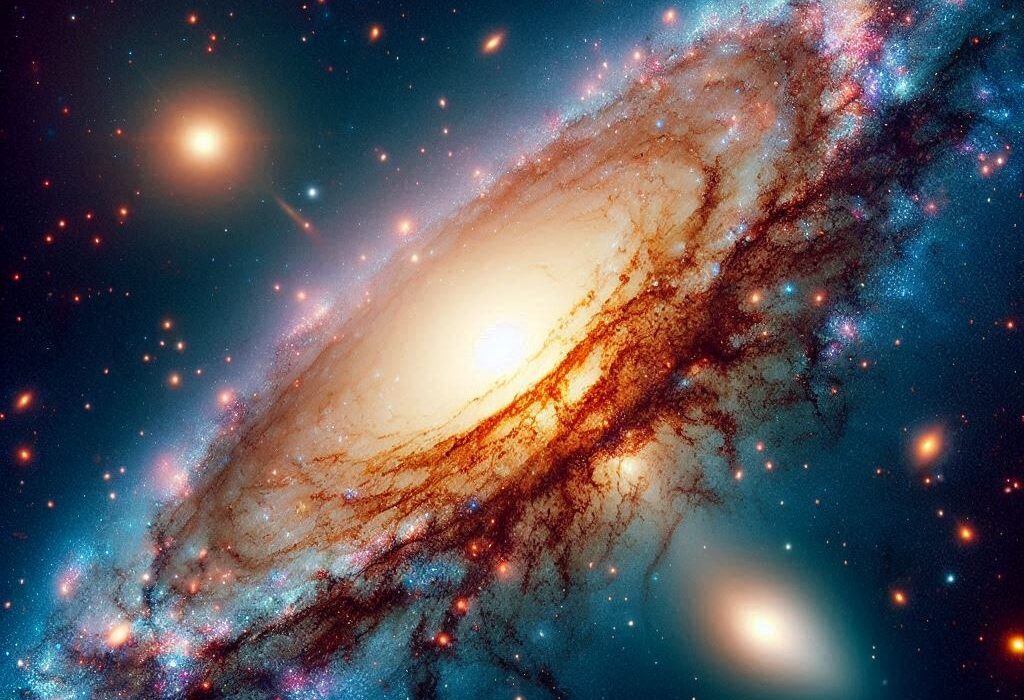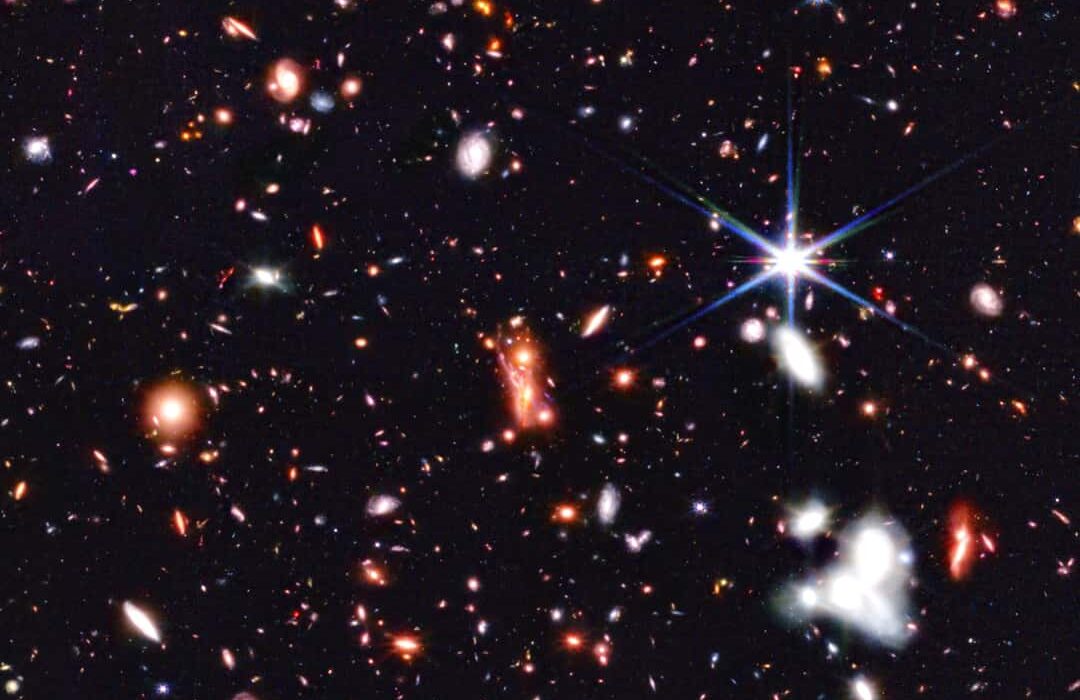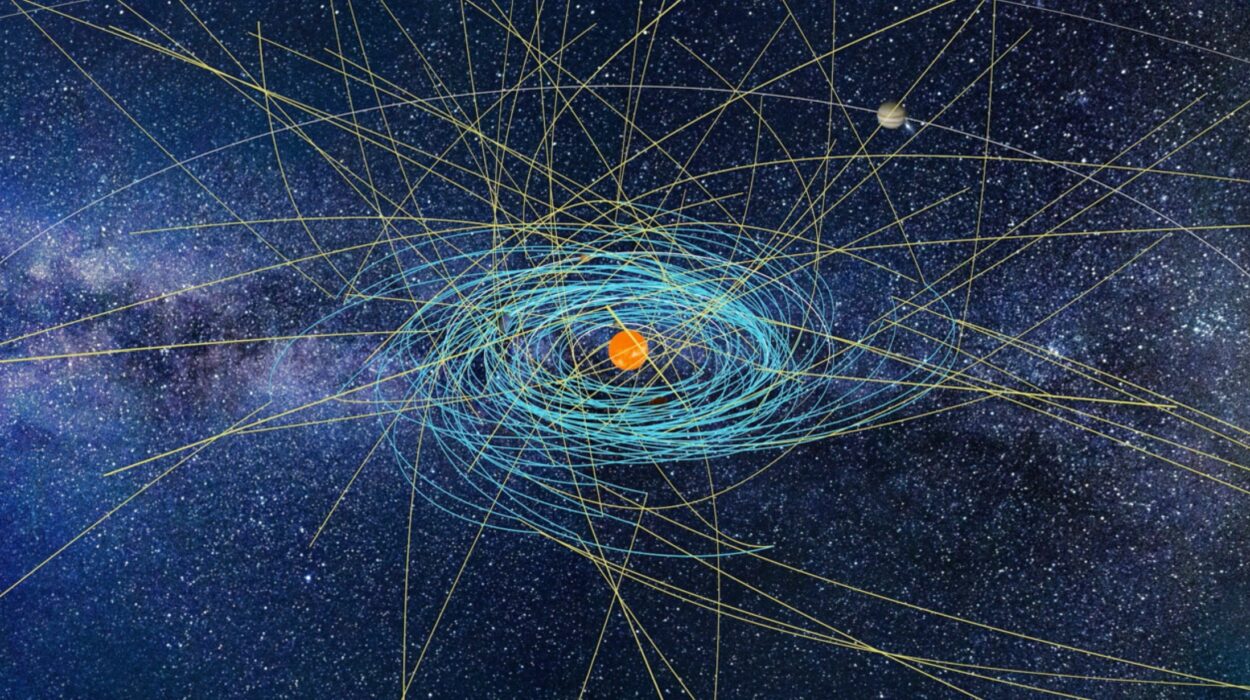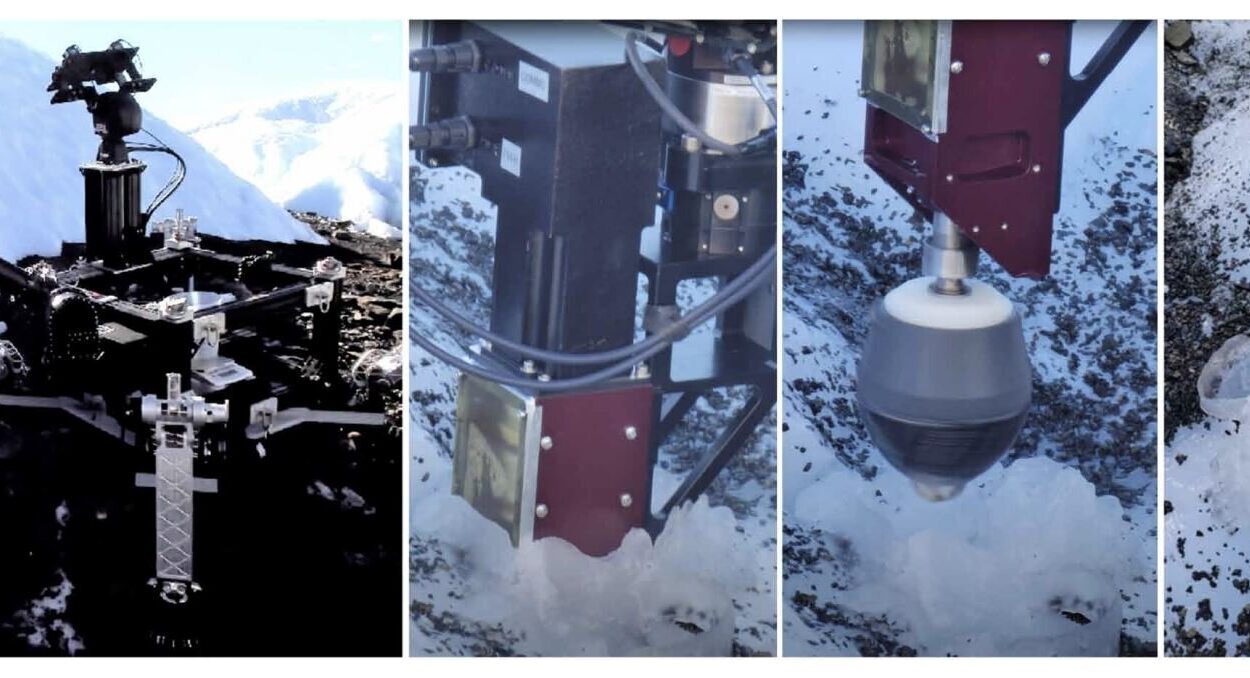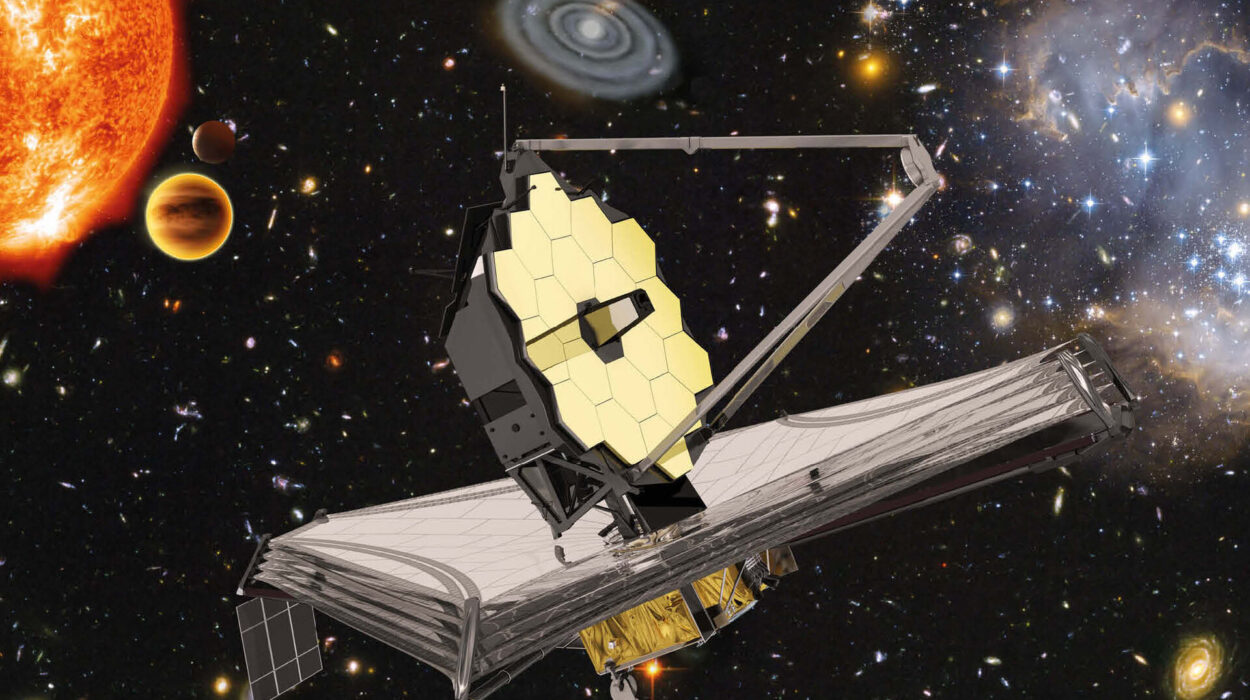Before time existed, before space stretched in any direction, before atoms or stars or even the whisper of energy — there was nothing. Not an empty void, not a blank canvas. Just nothingness. A concept so foreign, so absolute in its vacancy, that even our imaginations flinch from trying to understand it.
And yet, out of this unimaginable absence, the universe began.
It did not flicker into existence from a great fireball in space. There was no space to hold a fireball. No “before” in which something could have happened. This was the beginning not of something in time — this was the beginning of time itself.
The story of how the universe began is the story of how everything came to be. It is not just the domain of physicists and philosophers, but a tale that pulses in the blood of every human who has ever looked up at the night sky and wondered what lies beyond the stars.
The Moment That Wasn’t a Moment
Scientists call it the Big Bang, but the term is misleading. It wasn’t an explosion in space. It was the sudden appearance of space and time themselves, expanding from a singular point of unimaginable density and heat.
This “point” wasn’t sitting somewhere waiting to burst. It was everything — all of space, all of time, all of energy — compressed into a singularity so small that our understanding of physics breaks down. General relativity can’t describe it. Quantum mechanics fails. Here, at the edge of the beginning, our best theories fall silent.
What we do know begins an instant after — at a time called the Planck epoch, a mere 10^-43 seconds after the “start.” At this unimaginable scale, the four fundamental forces — gravity, electromagnetism, and the strong and weak nuclear forces — may have been united as one. The universe was a boiling sea of potential, hotter than we can comprehend, denser than anything we’ve ever observed.
And then, like a breath suddenly drawn into lungs that had never existed, the universe began to expand.
The Great Expansion
That expansion wasn’t gentle. It wasn’t a ripple in a calm pond. It was ferocious, explosive, faster than the speed of light — not because matter was moving quickly, but because space itself was stretching. This period, known as cosmic inflation, occurred within the first fraction of a second. It was as if the universe, startled by its own existence, rapidly grew from subatomic scales to something more akin to the size of a grapefruit.
To the casual mind, that might still seem small — but from that perspective, it’s as if a grain of sand grew to the size of the observable universe in less than a heartbeat.
And then, the inflation slowed. The expansion continued, but at a gentler pace. The immense energy that had driven inflation now cooled, allowing the raw ingredients of matter to begin taking form.
Light in the Darkness
For the first 380,000 years, the universe was a hot, opaque fog. Protons and electrons flew freely, unable to bind into atoms because of the intense energy. Photons — particles of light — scattered endlessly off the loose charged particles, unable to travel far. The universe glowed with light, but none of that light could move unimpeded. It was trapped, bouncing, blurred, smeared across the universe like a scream muffled by thick fog.
But the cosmos was cooling.
Eventually, the temperature dropped low enough — about 3,000 degrees Celsius — that protons and electrons could finally come together to form hydrogen atoms, the simplest and most abundant element in the universe. This moment, called recombination, was more than a chemical event. It was a transformation of transparency. Suddenly, photons could move freely. The fog lifted. Light escaped.
We still see that light today.
It’s called the Cosmic Microwave Background (CMB), and it is the oldest light in the universe — the whisper of the beginning, traveling across time and space for nearly 14 billion years to reach us. Every night sky we gaze at is steeped in this ancient radiation, a faint echo of the birth cry of the universe.
The Long Darkness and the First Stars
With light finally moving freely, the universe entered an age of darkness. Not in the literal sense, but in a cosmic one. Though hydrogen atoms filled space, there were no stars, no galaxies — just vast, expanding emptiness dotted with primordial matter.
But even this emptiness wasn’t uniform.
Tiny fluctuations in the density of matter — quantum wrinkles from the earliest moments — began to grow. Gravity, patient and insistent, began to pull denser regions of hydrogen together. Over millions of years, these clumps collapsed, heated, and at last ignited.
The first stars were born.
They were giants — massive, short-lived, burning hot and bright. They forged the first elements beyond hydrogen: helium, carbon, oxygen, and iron. And when they died, they exploded in supernovae, scattering these elements into space. These explosions seeded the cosmos with the ingredients for future stars, planets, and eventually, life.
The darkness was over. The universe had kindled its own lanterns.
Galaxies Awaken
As more stars were born, gravity sculpted them into larger structures. Stars clumped into galaxies — great spiraling cities of light and gas, hundreds of billions strong. These galaxies spun and collided, merged and danced. The universe became a dynamic, living organism of star birth and death, of collisions and creations.
Galaxies gathered into clusters. Clusters formed superclusters. Webs of matter spanned across space, vast filaments connecting galaxy clusters like cosmic veins. And in the vast spaces between — a haunting emptiness, voids so large they could swallow thousands of galaxies.
Somewhere in this growing cosmic web, a small galaxy began to form on the edge of a minor cluster. It wasn’t grand. It didn’t shine more brightly than its neighbors. But within it, on the arm of a spiral, a star would eventually ignite that would light the sky for creatures who could ask questions like: “How did this all begin?”
The Earth Beneath Our Feet
About 9 billion years after the Big Bang, our solar system formed from the collapse of a molecular cloud. A young star, Sol, flared to life, surrounded by a disk of dust and gas. Gravity worked its quiet miracle again — dust gathered into pebbles, pebbles into rocks, rocks into planets.
On one of those planets, Earth, a delicate balance of conditions created a crucible for life. Water, warmth, and time allowed chemistry to become biology. Over billions of years, single-celled organisms evolved into complexity. Life adapted, suffered, evolved, and flourished.
Eventually, one species — small and fragile but curious beyond measure — developed minds capable of language, memory, and imagination. We became the universe’s way of knowing itself.
And we looked up.
We built telescopes and sent probes into space. We read the faint light of ancient galaxies and listened to the hum of the cosmic background. We split atoms and smashed particles together. And in all of it, we tried to answer the greatest question: where did we come from?
The Mathematics of Creation
The story of the universe is, in many ways, a story of numbers. Equations describe the curvature of space-time, the speed of light, the strength of forces, the behavior of particles. From the elegance of Einstein’s field equations to the probabilistic dance of quantum mechanics, the universe follows a script written in the language of mathematics.
But behind these numbers are mysteries we still don’t understand.
Why did the universe expand with the rate it did? Why does matter exist at all when matter and antimatter should have annihilated each other completely? What came before the Big Bang — if “before” even means anything?
Some theories suggest our universe is just one bubble in a multiverse — an infinite sea of universes, each with different physical laws. Others propose that the universe is cyclic, reborn in a series of endless bangs and collapses. String theory, loop quantum gravity, and other bold ideas attempt to write the next chapter in our understanding, but none are yet complete.
Still, the questions persist. And so does our yearning.
The Universe Is Still Becoming
The universe is not done. It continues to expand — and not just expand, but accelerate. Distant galaxies are receding faster and faster, driven apart by a mysterious force we call dark energy. We don’t know what dark energy is. It makes up nearly 70% of the universe, yet it remains one of the greatest enigmas of modern science.
Dark matter — another unknown — shapes galaxies and holds them together. Though invisible and undetectable by conventional means, it tugs on the cosmos with gravitational fingers. It outweighs regular matter five to one.
The universe we see — stars, planets, gas, dust — is only about 5% of what’s really out there.
And what of the future?
If current trends continue, galaxies will drift further apart, stars will exhaust their fuel, and the cosmos will grow darker and colder. This scenario, called the heat death or “Big Freeze,” imagines a universe that fades not with a bang, but with a long, slow sigh.
But that’s only one possibility. The universe is a master of surprises.
The Poetry of Origin
When we ask how the universe began, we are not just seeking a scientific answer. We are reaching for meaning. In the glow of ancient stars and the whisper of background radiation, we hear something more than facts — we hear the story of our origin, a myth made true by equations and telescopes.
The Big Bang is not just a theory. It is our creation story.
And like all great stories, it is both humbling and elevating. It reminds us that we are small — infinitesimal specks on a pale blue dot, orbiting a modest star in a vast and ancient universe.
But it also tells us that we are rare. We are the product of chance and time and fire. We are made of star-stuff, as Carl Sagan once said — forged in the hearts of stars, born from cosmic violence, yet capable of beauty and thought.
We are not separate from the universe. We are it, conscious of itself.
Still We Wonder
There is something almost sacred about the pursuit of cosmology. To map the stars, to measure the flickers of ancient light, to build colliders that glimpse the birth of particles — these are not just scientific endeavors. They are acts of devotion.
And though we may never know all the answers — though the moment before the Big Bang may forever be hidden behind a veil of physics — the wonder remains.
Perhaps that is the point.
The universe began in mystery, and perhaps it will always end in mystery. But between those mysteries is the miracle of now — this moment, this breath, this awareness.
The cosmos is not just a story of what was. It is a story of what is. And it is still unfolding.

